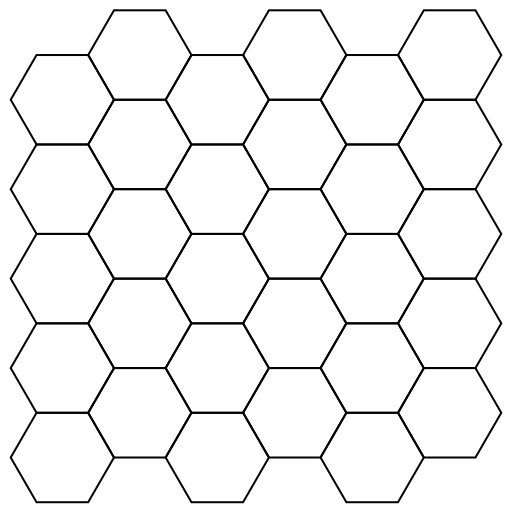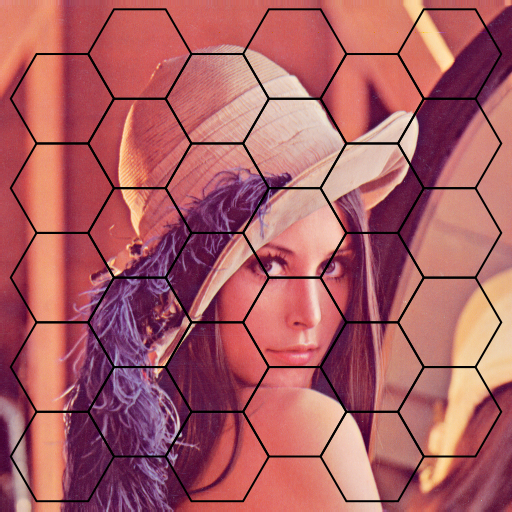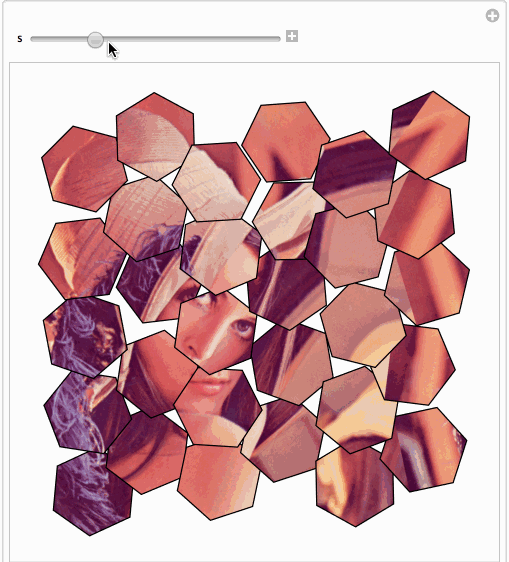It is a bit not clear what you mean. Say you mean a simple overlap...
h[x_, y_] := Polygon[Table[.1 {Cos[2 Pi k/6] + x, Sin[2 Pi k/6] + y}, {k, 6}]]
hex = Graphics[{EdgeForm[Directive[Black, Thick]], FaceForm[], LightBlue,
Table[h[3 i + 3 ((-1)^j + 1)/4, Sqrt[3]/2 j], {i, 3}, {j, 10}]}, ImageSize -> 512]

ImageMultiply[{ExampleData[{"TestImage", "Lena"}], Rasterize@hex}]

Or maybe you'd like something (adopted from here ) fancier...
Manipulate[SeedRandom[1];
Graphics[{EdgeForm[Black], Texture[ExampleData[{"TestImage", "Lena"}]],
GeometricTransformation[#,
Composition[TranslationTransform@RandomReal[.1 s {-1, 1}, 2],
RotationTransform[s RandomReal[{-Pi, Pi}], Mean@First[#]]]] & /@
Cases[Normal@hex,
Polygon[p_, ___] :> Polygon[p, VertexTextureCoordinates -> p], Infinity]}], {s, 0, 1}]
